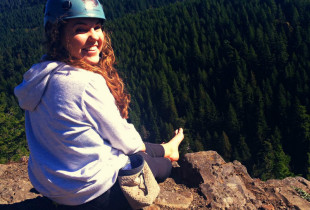by Amanda Tucker
Have you ever had one of those moments when you’re driving down the road blasting Lady Gaga on your stereo, windows rolled down, feeling amazing, when suddenly, out of nowhere, some wild driver on a cell phone pulls out in front of you. Whew! Deep breath in, a quick gasp of air almost as though trying to suck in a little bit more life, narrowly missing an accident. This reaction is typically followed by anger, tightening of the muscles in the neck and shoulders and often an engaged middle finger. If you have a driver’s license, chances are you have experienced something like this at some point in life.
Our body has multiple ways of dealing with stress. Typically these little “after effects” are not pleasant. The first sign of stress typically involves the breath. When we are nervous, afraid or anxious, our breath pattern changes. It becomes tight, harnessed and sometimes it feels like getting a full breath is completely impossible. This feeling is the absolute worst. In yoga, the Sanskrit word pranayama is associated with breath, the true definition, meaning “life force.” It’s simple, no breath=no life, short uncomfortable breath=reduced quality of life.
If you’ve ever attended a yoga class you know about the magical moment at the end of class. That sweet instant where the world stands still and all that is asked of you is to breathe and exist. The word Savasana translates to “corpse pose.” Not that yoga is a morbid practice for emo devotees, but more of a practice for those wishing to move on and upward in life. This posture truly encompassing the idea that each time we step on our mat, we have the opportunity to move through our practice, feel any emotions come up and in the end, give it all up, truly letting go. Savasana is the best yoga posture to experience full open breath and can be done in a yoga class, or at home in the comfort of your own bed. Just don’t fall asleep, Corpse pose asks for a state of conscious awareness, another words, awake, but instead of your mind rolling around like a rock in a tumbler, it’s a little more settled. If you find that your mind is a little occupied, try focusing on the sound of your breath.

The quickest way to find a release in your body is through breath. A simple pause, inhale through the nose filling your belly with air, followed by an exhalation, or softening period of the breath. The beauty of pranayama is that we don’t have to be in Savasana, we can be in the grocery store, in an argument with a family member, or even in the car listening to Lady Gaga.
When we begin to pay attention to the flow of our breath, we notice a change in our bodies. Softer shoulders, a loose, relaxed jaw and overall sense of ease. Try this simple exercise at home and then start experimenting with where you can introduce conscious breathing throughout your day.
Savasana:
Lay flat on your back, with either legs extended or bent with your feet on the floor. Get as comfortable as you possibly can, adding supports with a pillow or bolster to get truly comfortable. Expand your arms away from your body, allowing the palms to face towards the ceiling. Close your eyes, and feel your teeth separate. Inhale slowly through the nose, experiencing the belly, chest and heart rise towards the ceiling. Try to feel a sense of expansion in the side walls of your lungs. Exhale through the nose, notice a sensation of calm move over the body, releasing any tension in the neck and shoulders. Fully release the air from your lungs nice and slow. On your next inhalation, try to feel your body lengthen, exhale, feel your body melt into the floor. Continue moving deeper into your practice of breath and body uniting. If your mind begins to wander, try counting backwards from 20, giving the mind something to focus on and then gradually observe the numbers slip away. Welcome the bliss. Welcome to Savasana.



